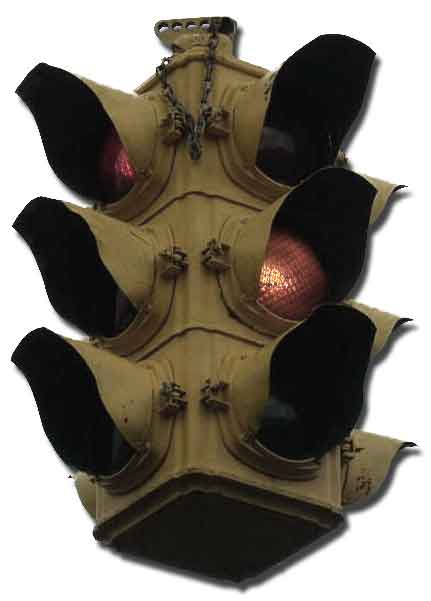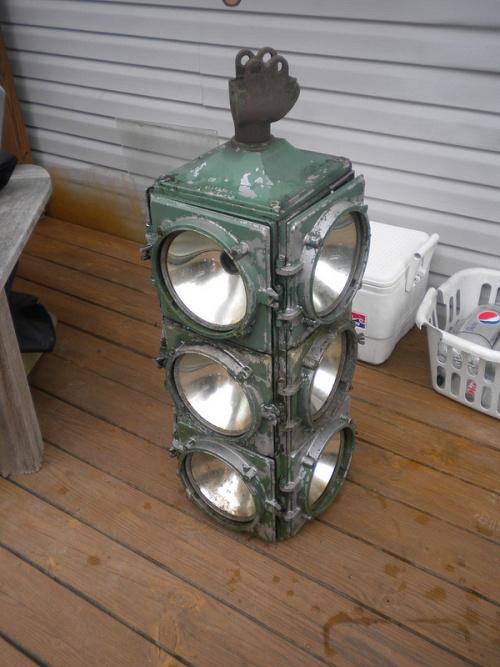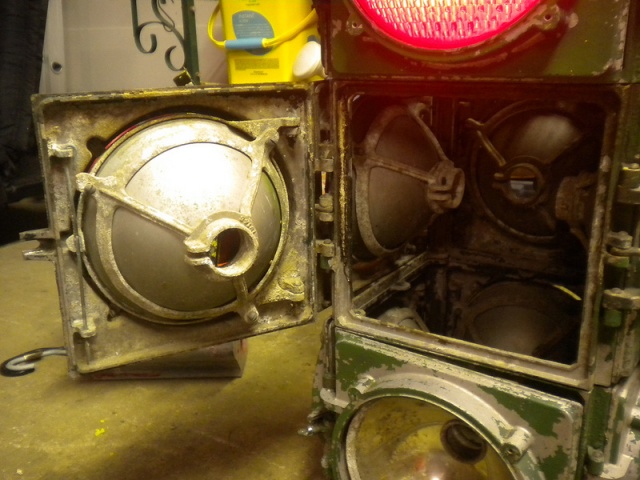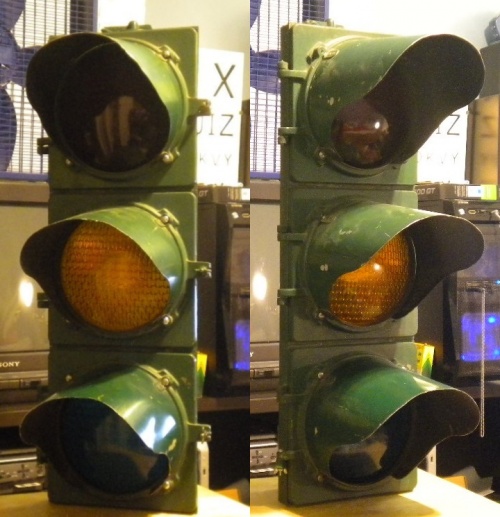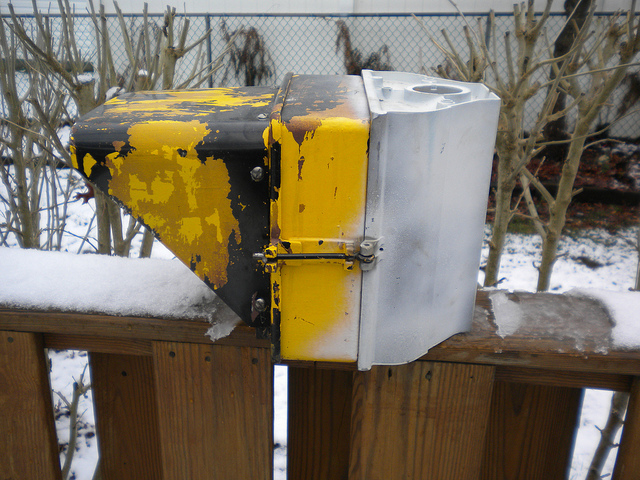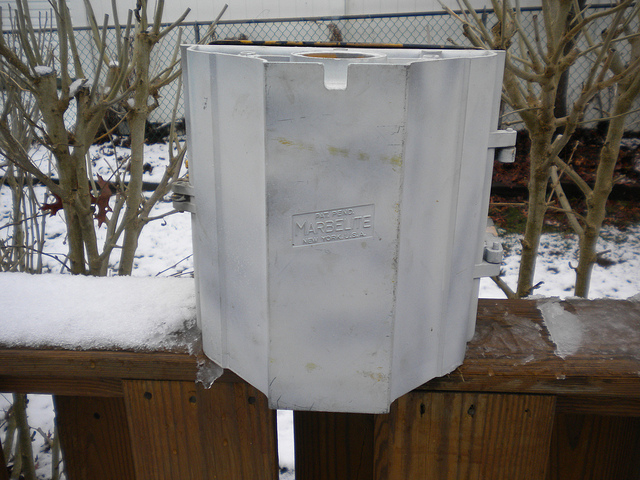Difference between revisions of "Marbelite"
(→Summary) |
m |
||
| (8 intermediate revisions by 4 users not shown) | |||
| Line 1: | Line 1: | ||
| + | [[File:Work_In_Progress.png]] | ||
| + | <br> | ||
| + | <br> | ||
| + | <br> | ||
| + | <br> | ||
| + | |||
== Summary == | == Summary == | ||
(The majority of data on this page directly from [http://home.att.net/~njsignals/marbid/index.htm NJSignals.com] - thanks to Sir Marbelot a.k.a. Francis Khoury) | (The majority of data on this page directly from [http://home.att.net/~njsignals/marbid/index.htm NJSignals.com] - thanks to Sir Marbelot a.k.a. Francis Khoury) | ||
| − | According to their printed literature [http://updated.marbsignal.com/ the Marbelite Company] began making traffic control equipment in 1923. Marbelite was one of several traffic control manufacturing companies located in the greater New York City area during the first half of the 20th Century. As Marbelite grew, it absorbed the signal product lines (or the entirety) of such companies as Signal Service Corp. (originally [[AGA]] - American Gas Accumulator) in 1945([http://wiki.signaltraffic.com/index.php?title=Image:Marb_ad_1945.gif 1] - THE AMERICAN CITY, December 1945, p.24) and Horni Signal'''[need [http://en.wikipedia.org/wiki/Wikipedia:Citing_sources citation]]'''. In the early years, Marbelite operated in conjunction with a sister company called Ruleta, which also made traffic signals. Ruleta may have been a separate company that was bought out by Marbelite. By the 1950's, Marbelite had become one of the biggest producers of traffic control equipment in the country. The core of their business was in the NY Tri-State area, and for several decades, New York City was | + | According to their printed literature [http://updated.marbsignal.com/ the Marbelite Company] began making traffic control equipment in 1923. Marbelite was one of several traffic control manufacturing companies located in the greater New York City area during the first half of the 20th Century. As Marbelite grew, it absorbed the signal product lines (or the entirety) of such companies as Signal Service Corp. (originally [[AGA]] - American Gas Accumulator) in 1945([http://wiki.signaltraffic.com/index.php?title=Image:Marb_ad_1945.gif 1] - THE AMERICAN CITY, December 1945, p.24) and Horni Signal'''[need [http://en.wikipedia.org/wiki/Wikipedia:Citing_sources citation]]'''. In the early years, Marbelite operated in conjunction with a sister company called Ruleta, which also made traffic signals. Ruleta may have been a separate company that was bought out by Marbelite. By the 1950's, Marbelite had become one of the biggest producers of traffic control equipment in the country. The core of their business was in the NY Tri-State area, and for several decades, New York City was almost exclusively Marbelite-equipped. |
| − | The company's president, Bill Lenz, passed away in 1977, | + | The company's president, Bill Lenz, passed away in 1977, which led to the discontinuation of the company's signal models. Even so, Marbelite continued to manufacture spare parts for its electro-mechanical signal controller models for various municipalities, including New York City. Since the mid 2000s, the company has discontinued the production of spare parts for such signal controllers, and, at the same time period, re-entered the signal manufacturing business when it first designed the M-P6-L pedestrian signal (Marbelite's first polycarbonate signal) for the city of New York. |
| − | Originally established in Manhattan, Marbelite eventually moved to the borough of Brooklyn in New York City sometime in the 1940s, | + | Originally established in Manhattan, Marbelite eventually moved to the borough of Brooklyn in New York City sometime in the 1940s, where it remained for a long period of time. The company then relocated to the borough of Staten Island, and finally to Manasquan, New Jersey over ten years ago, where Marbelite is currently located. |
| − | Marbelite signals are still fairly common in New | + | Marbelite signals are still fairly common in the New York Metropolitan area, but their numbers are steadily dwindling as newer signals replace them. |
| − | The signal head | + | The signal head molds used by Marbelite were acquired by General Traffic Equipment Corp. in Newburgh, NY. Early GTE traffic signal heads look identical to the model that Marbelite was producing in the 70's, and still have the name MARBELITE embossed inside the access doors. |
=== Note === | === Note === | ||
| Line 32: | Line 38: | ||
==== Horni Legacy ==== | ==== Horni Legacy ==== | ||
| + | |||
| + | ====Door-Mounted Reflectors==== | ||
| + | |||
| + | [[File:Marb4waypyth.jpg|500px]] | ||
| + | |||
| + | [[File:Marbdoorreflectorpyth.jpg|640px]] | ||
| + | |||
=== Adjustables === | === Adjustables === | ||
| + | ====Type L==== | ||
| + | ====Flat Top 1st Gen==== | ||
| + | |||
| + | ====Flat Top 2nd Gen==== | ||
| + | |||
| + | ====Flat Top 3rd Gen==== | ||
| + | |||
| + | ====Flat Top 4th Gen==== | ||
| + | |||
| + | ====TE-19408==== | ||
| + | |||
| + | [[File:Te19408pyth.JPG|500px]] | ||
=== Pedestrian === | === Pedestrian === | ||
| − | + | ====TE-19408==== | |
| + | |||
| + | [[File:Te19408ped1pyth.jpg]] | ||
| + | |||
| + | [[File:Te19408ped2pyth.jpg]] | ||
| + | |||
| + | '''Type M-P6L''' | ||
| + | |||
| + | After on hiatus for nearly 30 years, Marbelite re-entered the signal manufacturing business in the mid 2000s and designed its first polycarbonate signal. Thus, the birth of the model M-P6L. This pedestrian signal is the company's only signal model in production as of present day, and it was designed solely for the city of New York. | ||
| + | |||
| + | |||
| + | [[File:M1.jpg]] | ||
| + | |||
| + | [[File:M2.png]] | ||
== Lenses == | == Lenses == | ||
Latest revision as of 00:21, 13 July 2016
Summary
(The majority of data on this page directly from NJSignals.com - thanks to Sir Marbelot a.k.a. Francis Khoury)
According to their printed literature the Marbelite Company began making traffic control equipment in 1923. Marbelite was one of several traffic control manufacturing companies located in the greater New York City area during the first half of the 20th Century. As Marbelite grew, it absorbed the signal product lines (or the entirety) of such companies as Signal Service Corp. (originally AGA - American Gas Accumulator) in 1945(1 - THE AMERICAN CITY, December 1945, p.24) and Horni Signal[need citation]. In the early years, Marbelite operated in conjunction with a sister company called Ruleta, which also made traffic signals. Ruleta may have been a separate company that was bought out by Marbelite. By the 1950's, Marbelite had become one of the biggest producers of traffic control equipment in the country. The core of their business was in the NY Tri-State area, and for several decades, New York City was almost exclusively Marbelite-equipped.
The company's president, Bill Lenz, passed away in 1977, which led to the discontinuation of the company's signal models. Even so, Marbelite continued to manufacture spare parts for its electro-mechanical signal controller models for various municipalities, including New York City. Since the mid 2000s, the company has discontinued the production of spare parts for such signal controllers, and, at the same time period, re-entered the signal manufacturing business when it first designed the M-P6-L pedestrian signal (Marbelite's first polycarbonate signal) for the city of New York.
Originally established in Manhattan, Marbelite eventually moved to the borough of Brooklyn in New York City sometime in the 1940s, where it remained for a long period of time. The company then relocated to the borough of Staten Island, and finally to Manasquan, New Jersey over ten years ago, where Marbelite is currently located.
Marbelite signals are still fairly common in the New York Metropolitan area, but their numbers are steadily dwindling as newer signals replace them.
The signal head molds used by Marbelite were acquired by General Traffic Equipment Corp. in Newburgh, NY. Early GTE traffic signal heads look identical to the model that Marbelite was producing in the 70's, and still have the name MARBELITE embossed inside the access doors.
Note
Because of the folding of the AGA/SSC, Horni and Ruleta companies into Marbelite, there is considerable overlap between these company's signals and little chance of conclusively determining where/when one company ended and Marbelite began (--Ed T. 23:09, 2 July 2007 (EDT))
Traffic Signals
(Copy and Pasted the text below from an MSN SFC thread post by Francis Khoury without permission --Ed T. 13:21, 13 February 2008 (EST))
"Anyways, I do have a long-winded commentary here - The first signals with the familiar flat-top modular body cast were made by Horni in the late 30's. According to someone from Marbelite whom I grilled over the phone several years ago, the cast ID belonging to the flat-top body (not talking about the door, mind you) was first made in 1938. On a Marbelite flat top, the cast ID sometimes begins with "HS" for Horni Signal.
The early Horni flat-top signal came with INSET doors (sort of like a 1058) but with the reflectors mounted on the door, not on the body, and deeper lens portals to accomodate the reflectors. These reflectors were like those on a Ruleta and can be seen a 4-way Horni here: [1]. Notice that the doors are inset like a 1058, but you can see the raised bosses extending to the hinges...they look more like a GE than anything else! I have only seen one example of a Horni adjustable flat-top of this ilk on eBay several years ago...I should've bought it! I think Jesse has seen Marbelites that have this style. I think a Marb 4-way with these doors sold on eBay not too long ago..?
SO...my guess is that the first Marbelites had INSET doors with door-mounted reflectors during the 1940's. The 1949 "City of Angels" Marbelite ad looks like this style to me. Next came the lipped doors (starting 1950-ish?), then came the 1058 which looked more like the original inset doors (late 50's?). I can't guess why the style would have changed back to look more like the originals."
Four Ways
SSC Legacy
Horni Legacy
Door-Mounted Reflectors
Adjustables
Type L
Flat Top 1st Gen
Flat Top 2nd Gen
Flat Top 3rd Gen
Flat Top 4th Gen
TE-19408
Pedestrian
TE-19408
Type M-P6L
After on hiatus for nearly 30 years, Marbelite re-entered the signal manufacturing business in the mid 2000s and designed its first polycarbonate signal. Thus, the birth of the model M-P6L. This pedestrian signal is the company's only signal model in production as of present day, and it was designed solely for the city of New York.
Lenses
Controllers
Hardware
Miscellaneous Images
some quality pictures (overruns) that didn't flow with the article preceding [delete]

